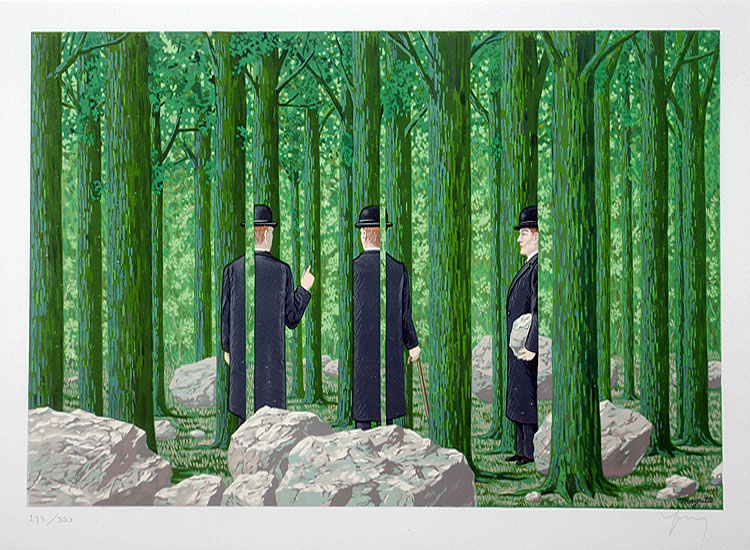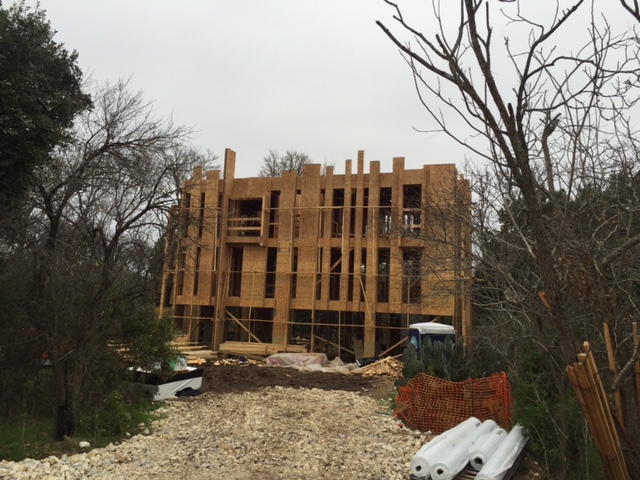



Becoming Forest House, a 2,300 square foot Single-Family Home inspired by surrealist artist Rene Magritte’s “le blanc-seing” attempts to dematerialize and disguise into the trees of a heavily wooded site. This project explores Deleuze and Guattari’s concepts of “becoming” and “deterritorialization”. The juxtaposition of vertical black slate-clad walls with windows creates an interplay between solid and void. The solid vertical walls are modular but randomly positioned, like tree trunks in a forest. As in Magritte’s painting, which experiments with foreground-background relationships and depth perception, the house is designed to be an experimental dwelling that blends into the woods in different ways at different times of day.
The house is located in a flood plain off of a small creek on a two-acre wooded site in Sunset Valley, just southwest of Austin, Texas. People move away from the city to find nature, but ironically often destroy the very nature they seek in the process. The idea of this house, then, is to attempt to create an architecture that is sympathetic to nature and that occupies an interstitial space between habitation and preservation of nature.
Not unlike the Farnsworth House and Fox River, the house is required to be elevated because of the potential for flooding. Thus, in keeping with the idea to create an architecture that disappears into the forest, the bedrooms are treehouse-like pods perched along the top level. Multiple skylights and the offsetfootprints of the rooms create interstitial gaps for light to filter deep down into the house — akin to light penetrating through a forest canopy.
The center of the house, finally, is a void occupied by nature: a small courtyard planted with banana and orange trees, with human activity revolving around.
The house is located in a flood plain off of a small creek on a two-acre wooded site in Sunset Valley, just southwest of Austin, Texas. People move away from the city to find nature, but ironically often destroy the very nature they seek in the process. The idea of this house, then, is to attempt to create an architecture that is sympathetic to nature and that occupies an interstitial space between habitation and preservation of nature.
Not unlike the Farnsworth House and Fox River, the house is required to be elevated because of the potential for flooding. Thus, in keeping with the idea to create an architecture that disappears into the forest, the bedrooms are treehouse-like pods perched along the top level. Multiple skylights and the offsetfootprints of the rooms create interstitial gaps for light to filter deep down into the house — akin to light penetrating through a forest canopy.
The center of the house, finally, is a void occupied by nature: a small courtyard planted with banana and orange trees, with human activity revolving around.
